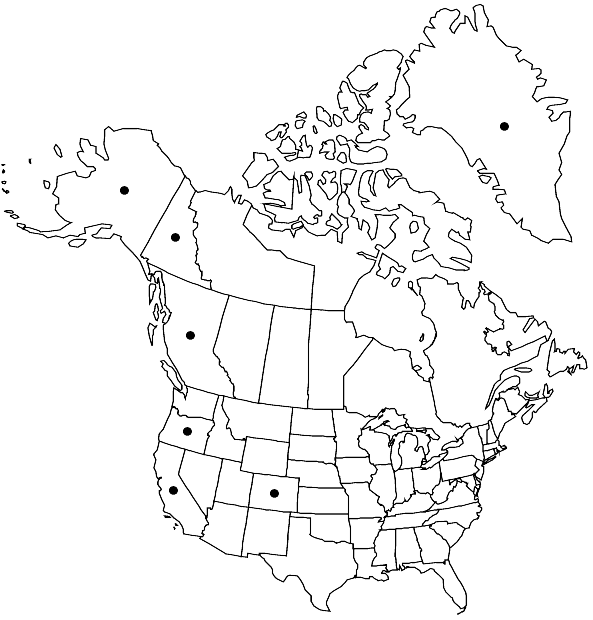Andreaea heinemannii
Bot. Zeitung (Berlin) 4: 324, plate 2. 1846,.
Plants brown to black. Leaves erect to spreading, occasionally secund, broadly subulate from an ovate base, widest in proximal half of leaf, apex symmetric; costa present, percurrent and filling the leaf apices, weak, flattened distally, often not reaching the leaf insertion; leaf margins entire or occasionally weakly crenulate; basal laminal cells quadrate to occasionally short-rectangular, a few marginal cells rectangular, walls usually sinuose; medial laminal cells quadrate, 1-stratose or sometimes 2-stratose in patches, lumens rounded-quadrate; laminal papillae rare, low. Sexual condition apparently autoicous; perichaetial leaves differentiated, convolute-sheathing. Spores 20–30(–40) µm.
Habitat: Acidic rocks
Elevation: low to moderate elevations
Distribution

Greenland, B.C., Yukon, Alaska, Calif., Colo., Oreg., s Europe, se Asia, Atlantic Islands (Canary Islands, Kerguelen Island, Madiera Island).
Discussion
Andreaea heinemannii is a relatively small species in the genus, having irregularly divergent leaf apices of a flat subula. The weak costa commonly does not reach the leaf insertion, and this species may be mistaken for A. rupestris.
Selected References
None.